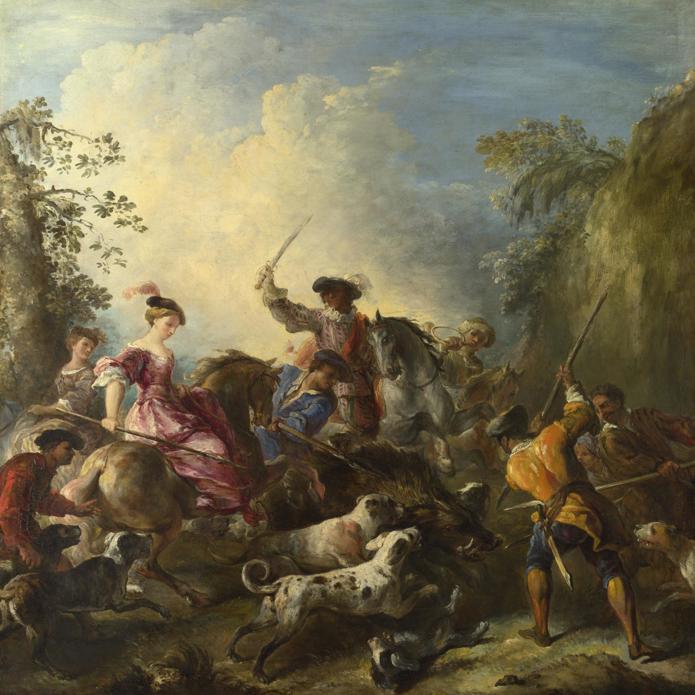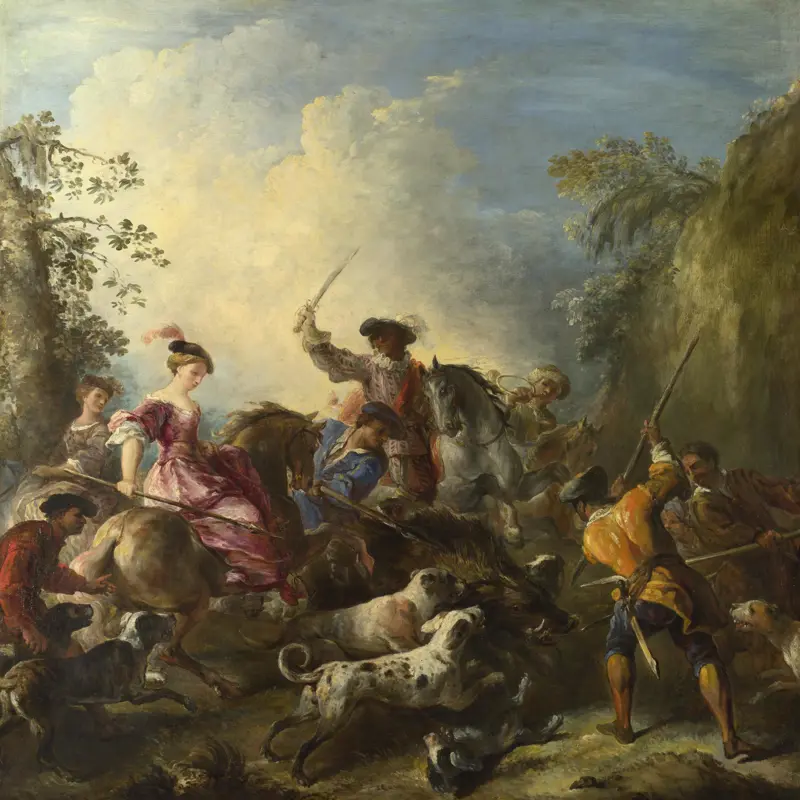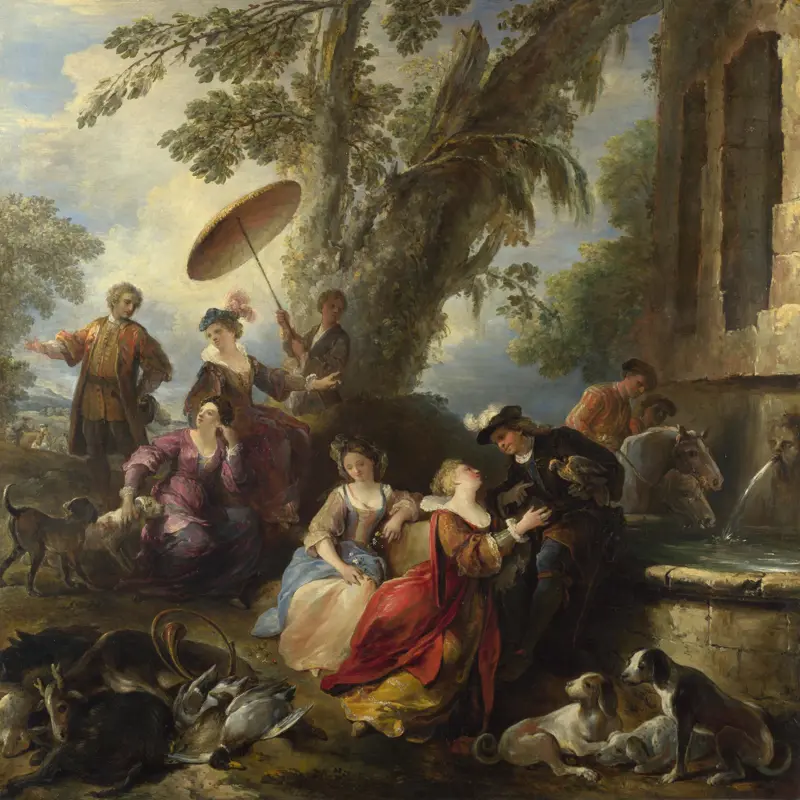Joseph Parrocel, 'The Boar Hunt', about 1700
About the work
Overview
The terrified boar is surrounded on all sides by riders on horseback and men on foot with spears. This moment has been chosen for dramatic effect: the boar is trapped and about to be killed. The rearing horses and snarling dogs add to the intensity of the action. Forced into a narrow space, animals and people collide; one dog has been knocked to the ground. The loose, visible brushstrokes create a feeling of hurried movement.
Hunting was a common pursuit for the wealthy in seventeenth-century France. The figures on horseback enjoy the chase rather than directly participate in the act of killing: the male figure on the grey horse raises his sword in triumph and behind him another blows a bugle. Two women watch from their horses; one holds a spear imitating those of the men on the ground.
The painting’s companion, The Return from the Hunt, is also in the National Gallery.
Key facts
Details
- Full title
- The Boar Hunt
- Artist
- Joseph Parrocel
- Artist dates
- 1646 - 1704
- Part of the series
- Two Hunting Scenes
- Date made
- About 1700
- Medium and support
- Oil on canvas
- Dimensions
- 109 × 104.1 cm
- Acquisition credit
- Bought, 1982
- Inventory number
- NG6473
- Location
- Not on display
- Collection
- Main Collection
- Frame
- 18th-century French Frame (original frame)
Provenance
Additional information
Text extracted from the ‘Provenance’ section of the catalogue entry in Humphrey Wine, ‘National Gallery Catalogues: The Seventeenth Century French Paintings’, London 2001; for further information, see the full catalogue entry.
Bibliography
-
1985National Gallery, The National Gallery Report: January 1982 - December 1984, London 1985
-
2001H. Wine, National Gallery Catalogues: The Seventeenth Century French Paintings, London 2001
-
2001
C. Baker and T. Henry, The National Gallery: Complete Illustrated Catalogue, London 2001
About this record
If you know more about this work or have spotted an error, please contact us. Please note that exhibition histories are listed from 2009 onwards. Bibliographies may not be complete; more comprehensive information is available in the National Gallery Library.
Images
About the series: Two Hunting Scenes

Overview
These two paintings, which were made as companion works to hang together, show the moments during and after a gallant hunt for wild animals. The Boar Hunt, a scene of suspense, drama and movement, can be seen as a nod to the aristocratic hunting scenes painted by Dutch artists in the second half of the seventeenth century. It is paired with The Return from the Hunt, which is altogether more peaceful and is closer in spirit to the fêtes galantes of Parrocel’s near-contemporary, Jean-Antoine Watteau, which show elegantly costumed figures in parkland settings.
Parrocel mainly painted battle scenes, particularly the military conquests of the French King Louis XIV, as well as hunting subjects, many of which were royal commissions. The Boar Hunt and The Return from the Hunt were painted in about 1700, probably for the King, who gave them to his son, Louis Alexandre de Bourbon, the Count of Toulouse. They have magnificent frames decorated with carved animal heads, which were probably made around the same time.


